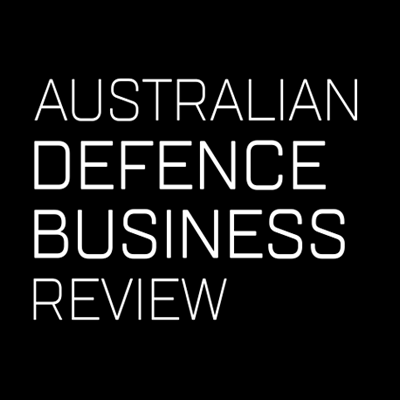F-35 kohdalla ei ole vaihtoehtoa. Kaikki uhkakirjastoon liittyvä softakehitystyö on lain mukaan tehtävä USA:ssa. Eli black box on. FMS-asiakkailla on vain yksi tiski. Partnereilla on kaksi yhteislabraa.Koska Suomi ei ole missään liittoumassa, emme voi sodan aikana laskea sen varaan että vian tullessa ruuvaamme vain koneesta mystisen mustan laatikon irti ja lähetämme sen Fort Worthin ylipappien ihmeteltäväksi, ja odottelemme postissa tulevaa korvaavaa boksia.
Ei tuota siitä huolimatta näytä ainakaan vielä karsitun.
Pitemmin lähteessä:
But an EW system is only as good as the data library from which it draws its information. While the ASQ-239 may be able to provide information on threats to the pilot faster than previous systems, the old adage of ‘rubbish in – rubbish out’ remains as pertinent today as it was with older analogue systems.
To this end, dedicated data reprogramming laboratories have been established by the US, partner nations, and FMS customers to generate mission data files that will ensure the F-35 EW system’s data library is not only of sufficient fidelity for its advanced systems, but that it remains tactically relevant for the F-35’s life of type.
There are several reprogramming labs (RL) for the F-35 for which the various partner nations and FMS operators are patrons, and these are generally aligned with levels of capability or access. The US maintains its own RL at Eglin AFB in Florida, and an FMS customer lab has been established at Naval Air Warfare Center (NAWC) Pt Mugu, Ventura County north of Los Angeles.
Australia has teamed with two other non-US ‘five-eyes’ JSF program partners to establish the Australia Canada UK Reprogramming Lab (ACURL). The three nations share common geo-political and strategic interests, and are generally subject to similar US export and security requirements. And while Canada has paused its F-35 acquisition pending a competitive evaluation of other air combat capabilities, it remains an ACURL partner for the time being.
“There’s a number of different laboratories being established,” Australia’s JSF Program Manager, AVM Leigh Gordon told ADBR. “There’s one for the Norwegians and the Italians (the NIRL), there’s the US complex (USRL), and there’s the ACURL. There’s also a lab at Point Mugu that looks after FMS customers and other partners who haven’t built or contributed to their own sovereign reprogramming laboratories.”
The ACURL hardware was initially established at Lockheed Martin’s Fort Worth factory in Texas, but is in the final stages of being moved to a purpose-designed 2,300 sqm facility adjacent to the USRL at Eglin AFB in Florida and which comes under the USAF’s 53rd Electronic Warfare Group (EWG).
“The ACURL has two meanings – one is the building and the name on the building. But it’s also the capability,” JSF Division Project Director Support Systems, GPCAPT Guy Adams told us.
“The reprogramming capability consists of hardware and software tools to build the MDFs, and additional hardware and software to test the performance of the MDFs once they’re produced,” GPCAPT Adams said. “It also includes the people – that capability will consist of up to about 115 people by the time we get to IOC (initial operational capability) which includes Australian plus Royal Air Force and Royal Navy personnel as well. It also includes US partner support complex personnel and a number of US contractor personnel.”
The hardware component of the ACURL consists of radio frequency stimulators and simulators, as well as actual aircraft hardware that can inject threats to test how mission data files will respond using hardware-in-the-loop testing procedures. While no date has publicly been set for IOC, it is planned to be later this year.
“The ACURL is an absolute joint arrangement between us and the UK – we are tied at the hip to the UK,” explained GPCAPT Adams. “The ACURL is jointly managed and operated by Australia and the UK, with operators of both nations joined in dedicated reprogramming teams,” he added. “We really appreciate the experience the UK brings to the table from their reprogramming background.”

BUILDING DATA - Inside the RAAF’s F-35 mission data programming capability | ADBR
By Andrew McLaughlin THIS ARTICLE APPEARED IN THE JAN-FEB 2019 ISSUE OF ADBR. So, the first F-35s are here, the validation and verification (V&V) process is underway, training of RAAF…
 adbr.com.au
adbr.com.au
Tarvitaanko Israelin tapainen järjestely? Uskalletaanko edes pyytää, tyydytäänkö? Mielenkiintoisia kysymyksiä, joista ei saa otetta. Vaakakupissa on toisella puolella niin paljon, että ei voi sanoa helposti vain ei kiitos. Sillä ei ole millään muotoa realistista kerätä itse vastaavaa määrää uhkadataa kuin USA.Tämä vanha juttu vaikuttaisi vihjaavan sitä, että Israelilla on kyky uhkakirjaston omatoimisiin päivityksiin.
Good old IAI.
Ajatelkaapas jos ostettaisiin asevelihengessä nimenomaan F-35 Adir... (tosin vassarihallitus syönee ennemmin vaikka purkit surströmmingiä mieheen/naiseen yhdeltä istumalta)
The NAO said the UK Ministry of Defense is able to use exemptions when bringing a new capability into service. Capabilities that do not meet specifications but are deemed good enough would be given an exemption. The NAO also says that IOC acceptance criteria for the F-35 was not finalized “until several years” after business case approval in the second half of 2017.
Exemptions arose from “not being able to demonstrate deployability through a planned exercise,” because of aircraft availability, a reliance on contractors for mission support because of a lack of trained Royal Air Force personnel, and a lack of access to mission support training facilities in the U.S. Another challenge was an inability to program aircraft with UK mission data independently of the U.S. This has since been addressed with the opening of the Australian, Canadian and United Kingdom Reprogramming Laboratory (ACURL) at Eglin AFB, Florida, which was declared operational in February.

Viimeksi muokattu:



